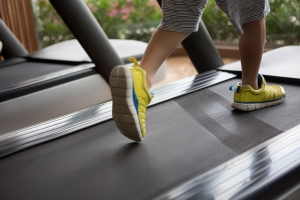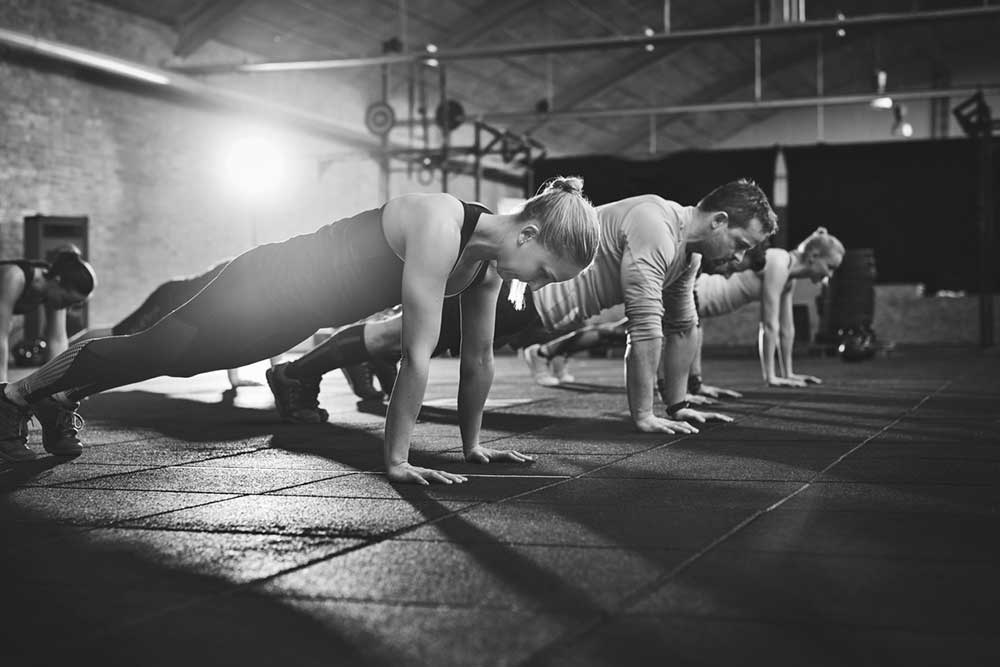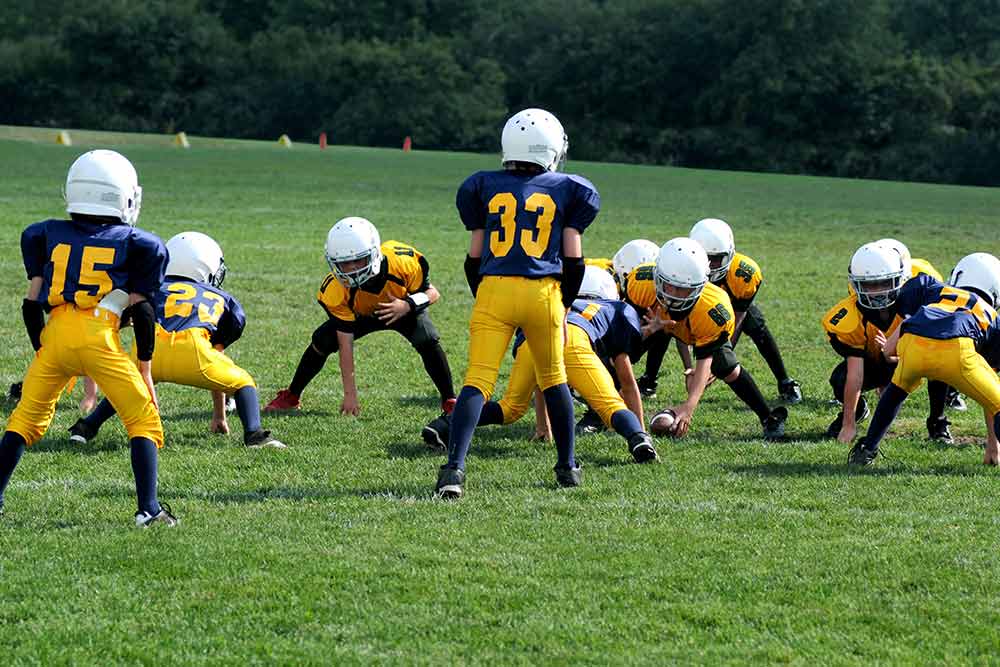Study Shows Active Children Are Better At Math

Catherine O’Brien
We know that aerobic exercise has positive effects on brain health and cognition. Recently, a greater emphasis has been placed on the relationship between aerobic exercise and brain health in the developmental years. From a structural point of view, greater physical activity has been associated with increased volume of the hippocampus and dorsal striatum. Previous research has also provided evidence that cortical thinning, which occurs during development, is associated with improved intellectual functioning.
Based on previous findings, the present researchers were interested in exploring the relationship between aerobic fitness level, academic achievement and cortical thickness in children age 9-10. They hypothesized that greater levels of physical fitness would be positively associated with cortical thickness and that cortical thinning would be associated with brain maturation and development. As such, they predicted that the high fit children would demonstrate decreased cortical thickness which would relate to stronger performance on the Wide Range Achievement Test.
Sample Size:
 Children ages 9-10 were screened using The Kaufman Brief Intelligence Test. Participants were excluded if their scores fell more than 1 standard deviation below the mean or above the 85th percentile. They also determined participants distance away from puberty / developmental stage using the Tanner Staging System. All participants completed a test of cardiopulmonary fitness (VO2max) to determine his or her fitness. During this test, participants ran on a treadmill at a steady pace while the incline was increased by 2.5% every 2 minutes. The grade of the treadmill increased every two minutes until the participant expressed that he or she could no longer continue. “VO2 max was defined when oxygen consumption remained at a steady state despite an increase in workload” (Chaddock-Heyman et al., p. 11).
Children ages 9-10 were screened using The Kaufman Brief Intelligence Test. Participants were excluded if their scores fell more than 1 standard deviation below the mean or above the 85th percentile. They also determined participants distance away from puberty / developmental stage using the Tanner Staging System. All participants completed a test of cardiopulmonary fitness (VO2max) to determine his or her fitness. During this test, participants ran on a treadmill at a steady pace while the incline was increased by 2.5% every 2 minutes. The grade of the treadmill increased every two minutes until the participant expressed that he or she could no longer continue. “VO2 max was defined when oxygen consumption remained at a steady state despite an increase in workload” (Chaddock-Heyman et al., p. 11).
Related Article: FUNtervals – Exercise Intervals For Children
Participants were assigned to either the low or high fit groups based on their fitness test results. If participants performed above the 70th percentile, they were considered “high” fit. If participants performed below the 20th percentile, they were considered to be “low’ fit. All participants who did not fall into either of these categories were excluded from the study.
One way to measure cortical structures on living subjects is to calculate cortical thickness by measuring the distance between the brain’s gray/white matter boundaries and pial surfaces (Chaddock-Heyman et al., p.2). In order to measure cortical thickness, participants were placed in a high-resolution MRI machine where a series of measurements and the images were collected on a 3-T head-only Siemens Allegra MRI scanner. In order to measure academic achievement, participants completed the Wide Range Achievement Test (WRAT-3). This test included measures of reading, spelling and arithmetic abilities.
The Results:
They performed a series of statistical analyses to compare demographic and physical fitness measures. They also analyzed relationships between fitness level (high vs. low) and cortical thickness. Finally, they conducted analyses to examine the relationship between cortical thickness and academic achievement. In line with the researcher’s hypothesis, the high fit children “showed decreased gray matter thickness in the superior frontal cortex, superior temporal areas, and lateral occipital cortex” (p. 7). This higher fitness level and lower cortical thickness was also associated with superior achievement in mathematics on standardized achievement tests when compared to lower fit children.
The results demonstrated a positive relationship between aerobic fitness, cortical thinning and performance in mathematics (see figure below). That is, increased aerobic fitness was positively correlated with increased performance on the WRAT arithmetic test and decreased cortical thickness was positively correlated with increased performance on the WRAT arithmetic test. Given the results showed correlations for math performance only, Chaddock-Heyman et al. point out that their findings show the need for further investigation to better understand the different biomarkers associated with academic achievement in various areas (mathematics, spelling, verbal).
Take Aways:
This study demonstrated an important association necessary to further investigate the relationship between aerobic exercise and academic achievement. I particularly appreciate the methods of this study that incorporated cortical thickness measurements. While, in my opinion, behavioral outcomes are of the utmost importance, anatomical differences and changes associated with aerobic exercise are also noteworthy.
Related Article: Children Weight Lifting: What You Need To Know!
The positive relationships observed in this study create an excellent foundation for future research on the subject. The findings of this study, in their correlational nature, leave some questions unanswered, however. While the researchers took measures to control for extraneous variables (Socioeconomic status, IQ etc.) the correlational nature of the study prevents one from garnering causal results. In this way, a follow-up study using a randomized control design is necessary. My next article will delve into research which tackles this very topic.
(adsbygoogle = window.adsbygoogle || []).push({});
You Might Like:
Reduce Cigarette Cravings with Acute Exercise
Catherine O’Brien It is no secret that smoking is a major health hazard that significantly increases risk of cancer, heart disease, stroke and other health problems. That said, 20% of adult men and 16% of...Effects of Outdoor Exercise
Catherine O’Brien Why Does Exercising Outdoors Feel So Much Better? I have always been a proponent of outdoor exercise, particularly running. There is something so satisfying and therapeutic about the fresh air and the sound...Music – Your HIIT Recovery Secret Weapon
Catherine O’Brien The effects of music on exercise experience is a common theme throughout my articles. I am always interested in the relationship between music and physical activity and how music can alter an exercise...Vestibular Migraines: Could Exercise Be The Answer?
Catherine O’Brien My last article highlighted the inverse relationship between headaches and VO2 max levels such that individuals who experienced headaches regularly had, on average, lower VO2 peaks than their control counterparts. Perhaps one of...Which Is Better For The Brain – Long Duration Or Short High Intensity Exercise?
Catherine O’Brien High intensity interval training (HIIT) is a form of exercise that utilizes “repeated bouts of short-to-moderate duration exercise at an intensity of 85-90% of peak oxygen uptake or 90-95% of peak heart rate...3 Strength Exercises For Individuals With Essential Tremor
Catherine O’Brien Essential tremor (ET) is a neurological disorder characterized by involuntary and rhythmic shaking. Typically, tremors occur in upper extremities such as the hands but tremors can exist in other body parts as well...(adsbygoogle = window.adsbygoogle || []).push({});















